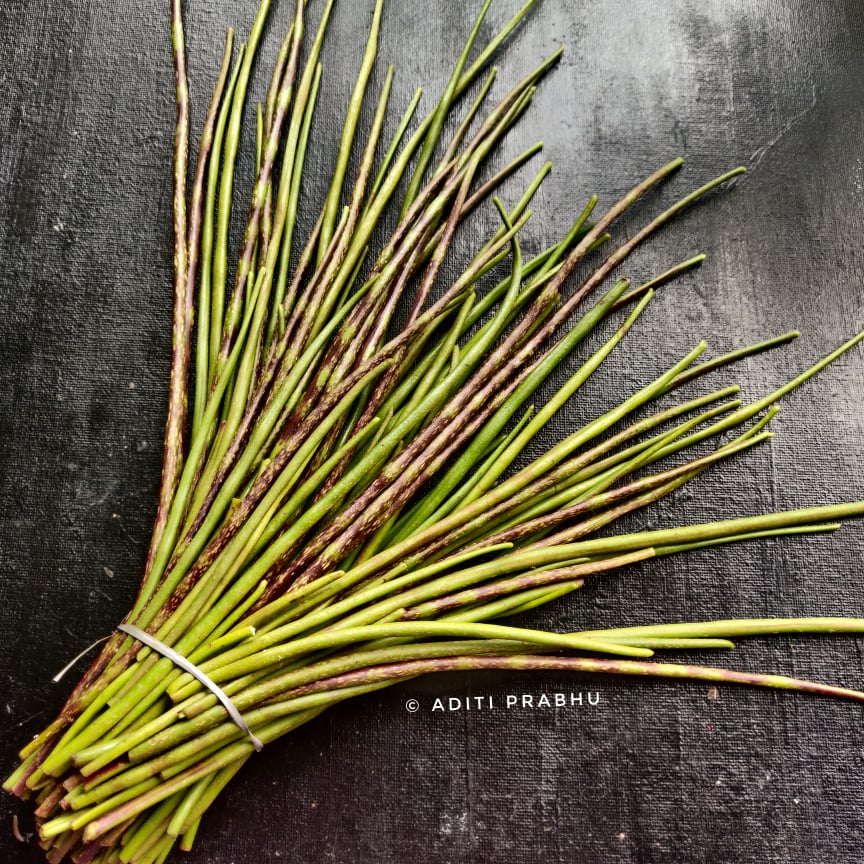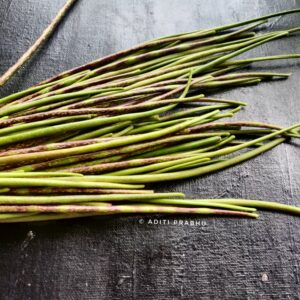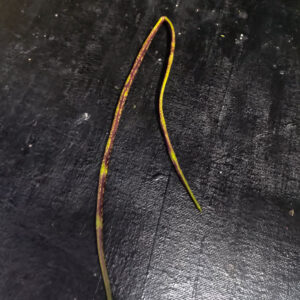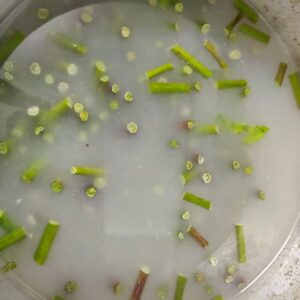Kudachya Shenga are long tender beans that grow wild in the forest. Hence called ranbhaji aka wild edible food.
Scientific Name of the plant
Holarrhena antidysenterica
Common Name for the plant
Kutaja(Sanskrit)
Kuda or Kudai (Hindi)
Kuda ( Marathi)
kodaga (Telugu)
kuddo (Gujarati)
Karachi (Bengali)
Availability
Holarrhena antidysenterica is a medicinal plant that grows abundantly in India.
Holarrhena antidysenterica aka kudachya shenga known for its use of leaves, seeds, bark, and flowers has economic importance. The white flowers bloom in summer post and the pods/ beans begin to grow in the early monsoon. The pods/beans or shenga are long, cylindrical, and have a smooth surface. These pods joint at the tip.
Kudachya shenga are available for a short time during early monsoons. Only the tender pods are edible. The tender beans break quickly and a milky white liquid oozes out.
Nutritional Information
While there is a lot of information on the usefulness of this plant’s seeds, bark, flowers, and leaves. I strangely couldn’t find a lot of literature on this wild food per se.
The seeds of this plant are called Inderjav and are used in the treatment of diarrhea, asthma, lung issues, and deworming. Many other gut health issues are said to be treated by it but they are mainly used as an antidiabetic remedy. The bark powder is used to prevent mouth odor, dental problems, etc
Overall this herb is anti-diabetic, antiemetic, antimicrobial, anti-fungal, and antipyretic. It finds wide usage in Ayurveda and Unani medicine.
Usage
When you chop the pods/ beans they give out a white liquid. Soak the chopped pods/beans in water for 10-15 mins prior to cooking. Also, give them a boil before using them in any dish.
Note: While these pods are toxic be careful while you consume these pods
These pods are used in making Chutneys, sabzi, and stir-fries with/ without dried fish.
While you are reading about wild foods, here are some more topics to read-moras bhaji, phodshi, or Shevale.
Some Reference:




1 Comment